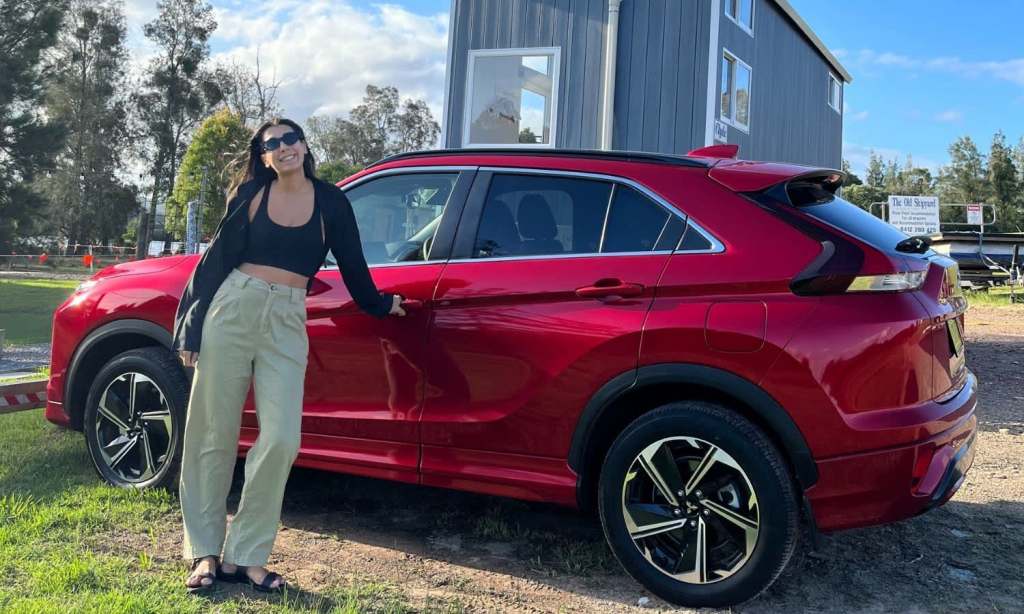I know nothing about cars. If you picked me up and drove me somewhere, I couldn’t tell you the colour of the car we drove in, let alone its make.
So, when I was recently invited to test an electric car on a weekend getaway from Sydney, I jumped at the chance to get a little more car literate. Plus, I thought my perspective as a non-car enthusiast and everyday person who isn’t afraid to ask dumb questions would make me perfect for relaying the experience of an electric car — in layman’s terms.
I was given the Mitsubishi Eclipse Cross Plug-in Hybrid Electric Vehicle (EV), which retails for $46,490 and went on sale in Australia in mid-August 2021.
I picked it up on a Friday afternoon at a garage in the Sydney suburb of Alexandria and listened to a briefing about it by an attendant. Straight away, my first assumption about EVs was proved untrue — I thought if a car had EV in its name, and could be charged at a station (different to hybrids, which charge themselves), it relied solely on electric charge.
Turns out, there are EVs that DO run fully on electricity, but you can still call a car an EV if it also uses petrol — if that’s case, it’s a PHEV (plug-in electric vehicle). Which mine did. In fact, its electric charge will only get you 50kms, which, if you’re using your car for short drives around town and are near a charging station, is a great solution. With petrol prices the way they are these days, imagine the money you’d save if you relied only on electric charge!
My destination was Eagleton, NSW to stay in a tiny house — you know, to keep with the eco-friendly theme. Side note: I definitely recommend staying around there — both Newcastle and Port Stephens are just a short drive away.

Driving the electric car was exactly like driving a normal (though, quite nice) car. It’s been a while since I’ve driven a car, and technology has moved quickly in the meantime. This car had an electric key, a little reflecting mirror to show me my speed without me having to look down, and rear view mirrors that automatically tucked in when you locked the car (again, I’ve been out of the car game for a while so these might all be the norm these days).
The dashboard showed how much petrol I had left and how much electric charge. It uses the electric charge first and then starts to use the petrol, though you can conserve the electric charge to use later, if you want. I’d say that I was about halfway to Newcastle when I noticed the electric charge had all been used up and I was now using petrol.
While I was told I didn’t have to recharge the electric charge, I wanted to get a feel for it. I’d been provided with the details of an NRMA charging station in Newcastle (one of two charging locations along the way – it’s worth noting there aren’t that many) so I went there.

It was a tiny carpark with two chargers off of a main road. Although the attendant had told me I’d need to download an app to pay, I wasn’t asked for any app or payment details and got a charge. He later told me that was likely one of the few charging stations left where you don’t have to pay for charge.
The charge process worked like fuelling up. I plugged the charging code into my car’s charger, followed the instructions on the station’s screen and waited for it to charge.
It was surprisingly slow. After five minutes, the charge meter in my car barely seemed to have moved. Reading online later, it turns out charging electric cars can take between 30 minutes or more than 12 hours.
In a blurb on the EV, Mitsubishi writes: “The lack of high-speed public charging infrastructure is not a significant barrier for PHEV owners, as they can and do charge at home or other convenient locations using a standard three-pin powerpoint. They are also future-ready with high-speed charging options should they become commonly available in the future.”

In other words, it sounds like most EV owners have chargers in their own homes. Also, Mitsubishi predicts there will be a lot more charging stations around in the near future as EVs become more and more common.
So, overall, what did I think of the EV? It was definitely different than what I’d expected (I really thought it might even feel different to drive, which it didn’t at all), but I do think it’ll be the way of the future.
The benefit of a PHEV is that while there aren’t as many charging stations around yet, you can still rely on petrol if you need. If you have the cash to splash on a brand new car, I’d definitely go with a PHEV over a regular petrol car or, to be honest, even a full EV, at this stage, with the technology still so new. Even if it’s a few Gs more than a regular petrol car, you’ll end up saving more in the long run, and you’ll be doing more for the environment by contributing less to the world’s harmful greenhouse gasses, to boot.
Read more stories from The Latch and subscribe to our email newsletter.







